Many people suffer from fungal infections at least once in their lives. Poor hygiene, humidity and a warm climate are possible causes of fungal infections. Athlete’s foot, jock itch, and oral thrush are some common fungal infections affecting different parts of the body that may even occur repeatedly if you are prone to developing them. While over-the-counter medicines and antifungal creams are readily available in the market, a lot of fungi that cause these infections are already becoming resistant to some medications.
The good news is that most fungal infections respond well to certain home remedies and with increasing number of people looking for natural ways to deal with these infections nowadays, these simple methods can be of huge help. So, we’ve compiled a list of some commonly available home remedies that may help deal with fungal infections naturally, let us take a look at these in this blog. We’ll also discuss about the causes, symptoms and risk factors for fungal infection to help you manage this condition better.
Here are some common factors which make you susceptible to developing fungal infections:
Of millions of fungi species, only roughly 300 infect humans in any significant way. Here are a few common fungal infections and their causes1.
This infection presents as ring-shaped rashes on the body and limbs, causing itchiness. It is caused by fungi such as Microsporum, Trichophyton, Epidermophyton, and up to 40 other species.
Similar to ringworm, athlete’s foot affects the feet, especially between the toes. It is characterized by red, scaly skin and is caused by fungi from the Dermatophyte group.
Common in men, jock itch occurs in the groin and thigh area. It appears as a red rash with itchiness that may worsen with exercise, and the skin may have a scaly appearance. This infection is also caused by the Dermatophyte group of fungi.
This infection affects the scalp and hair shafts, often seen in children. It can cause bald patches along with redness, tenderness, and sometimes pain. It is caused by fungi from the Dermatophyte group.
This condition is triggered by an overgrowth of Malassezia yeast, which is normally present on healthy skin. It results in oval patches on the skin, particularly on the chest, back, and arms, which are lighter or darker than the surrounding skin.
This infection occurs under the fingernails and toenails, leading to discolored and brittle nails, with an increase in nail thickness. It is primarily caused by Trichophyton, though many fingernail infections are due to Candida, a yeast-type fungus.
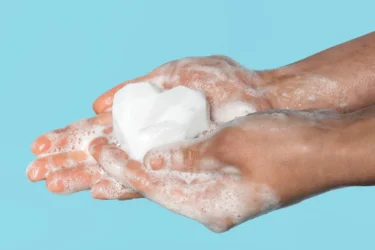
Ensure to clean the affected area with soap and water twice daily before you apply any home remedies or any other medication. This will control the spread of infection. While soap and water may not always be able to eliminate a fungal infection entirely, it helps to keep the spread down and lower the intensity of the infection.
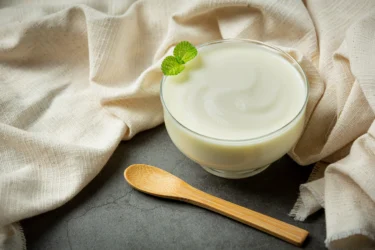
Yoghurt and other probiotics have an ample amount of good bacteria that help stave off many fungal infections. These fight off microbes that cause these infections2.
Fermented foods are another excellent source of probiotics. If these are not helping, you could use probiotic supplements that have more concentrated dosages of good bacteria. When considering supplements, its best to discuss with your doctor to understand the right type and dosage for your needs.

Apple cider vinegar is believed to have antifungal properties. You could mix two tablespoons in warm water and drink it up or dip a cotton ball in it and dab over your skin. Doing this thrice a day should produce beneficial results3.

Tea tree oil is naturally antifungal and antibacterial. Mix it with any carrier oil like coconut oil or olive oil and dab over the infected area about three to four times a day. This can be an effective home remedy to treat fungal infections4.

In its unheated form, even coconut oil can work as a potent antifungal agent. Applying it over the skin makes it a good, safe topical medicine. Since it is easy on the skin, it is also useful to manage scalp ringworm. Using it over the skin three times a day, can show positive results.
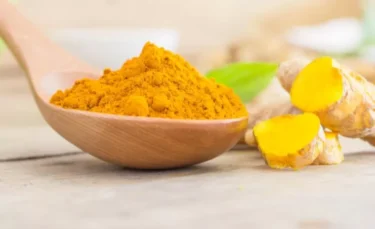
Turmeric is a potent antimicrobial and anti-inflammatory spice. Mix with a little water and apply over the infected area. This is one of the easiest home remedies for fungal infection as turmeric is present in all Indian kitchens across households. To get more health benefits out of turmeric, you can mix it with warm water, or have turmeric tea5.
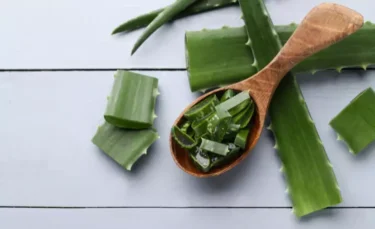
One of the most time-tested natural remedies to manage any skin infection is aloe vera. It not only help deal with the infection but also soothes and repairs skin damage5.
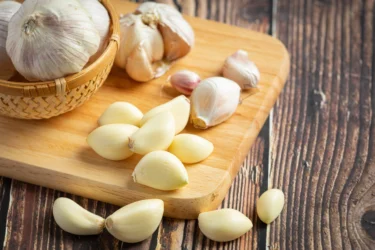
Garlic is one of the most potent antifungal and antimicrobial herbs. Those who eat garlic regularly are less susceptible to fungal infections. Crush a couple of garlic with some olive oil and make a paste. Apply to the infected area for about thirty minutes to soak in the benefits 5.
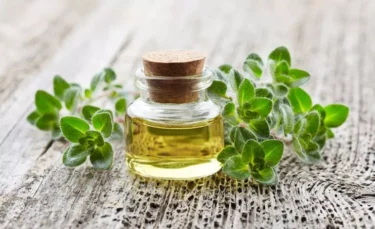
Another active antifungal agent is oregano oil. Mix a few drops with any carrier oil and dab on the affected area. You could also take oregano oil capsules orally, but discuss with a healthcare provider before consuming, especially if you have any medical conditions6.
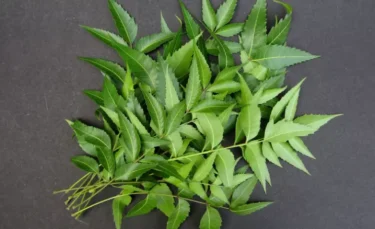
Neem leaves have effective antifungal properties and can be great for the skin. Washing the infected area with neem water helps in reducing fungal infections. To make neem water, boil neem leaves in water for 2 to 3 minutes5.

Vitamin C boosts our immune system. It protects our body from various infections. A good immune system also helps to treat fungal infections faster. Food sources rich in vitamin C include citrus fruits like lemons and oranges and vegetables like bell peppers and brocolli7.

Baking soda can be useful in healing fungal infections like athlete’s foot. Applying baking soda powder on feet and the inside of shoes helps to absorb moisture and sweat. It thus avoids the infection from spreading8.
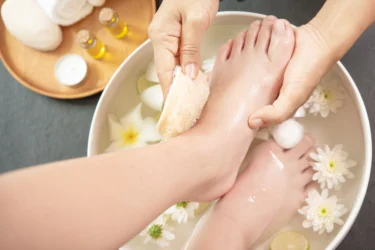
Hydrogen Peroxide also helps to heal Athlete’s Foot. Soaking feet in a solution made using equal parts of water and hydrogen peroxide can effectively destroy the fungus causing athletes’ feet9.
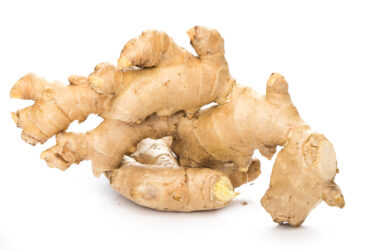
Gingerol present in ginger has potent antifungal properties. Adding ginger to our diet in the form of ginger tea effectively helps in managing fungal infections like Candida and even avoids their chances of occurrence5.

Using honey is also one of the easiest home remedies for dealing with fungal infections. It is anti-inflammatory and can also be effective in killing fungus and bacteria which are responsible for causing skin infections. Applying raw honey to the affected region is the best solution as it is loaded with healing properties.
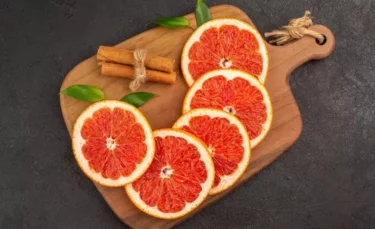
Initial research10 has shown that grapefruit seeds extract has the healing power to treat fungal infections. It is especially found to be effective in oral candidiasis. To use these, mix a drop of the seed extract with a few drops of water and apply to the affected spot(s) twice a day.

Licorice is naturally bestowed with anti-inflammatory and anti-microbial properties and is therefore perfect to take care of fungal infections. To use it, add powdered licorice to a cup of water and bring it to a boil. Let it simmer for a few minutes. Once it gets a paste-like consistency, let it cool and apply the mixture to the affected skin twice a day11.

Lemongrass is also laden with anti-microbial properties so you can easily use it to deal with fungal infections as one of the home remedies. You need to mix lemongrass oil with a carrier oil and dab it on the affected region with a cotton ball or swab two times a day6!
Dermatophytes which cause fungal infections have become very resistant to common antifungal drugs these days (due to the injudicious use of these drugs), I have observed many patients taking antifungal drugs for a longer period without getting benefits, therefore, one should be visiting his physician whenever they are suffering from fungal infections rather than self-medicating themselves with medicines for a longer period of time which could cause serious side effects.
Dr. Nikhil Yadav, MBBS MD,CCEBDM
Although studies have shown potential antifungal properties of these products, further large-scale trials are needed to confirm these. Remember, these remedies have to be followed regularly to achieve the desired results. Also, check for allergies to these before using them. And if there is no improvement with these home remedies, seek out medical attention for further treatment.
Also Read: Easy Home Remedies for Wart Removal
You must consult a doctor if even after following home remedies, there is no improvement. Also, in some cases, prompt medical attention is required. These include:
The fact is, most fungal infections are easily curable with proper treatment, you may not even be aware you have a fungal infection. Self-examination goes a long way in identifying fungal infections early, especially if there are no other symptoms like itching or irritation.
Also Read: How HPV Can Lead to Cancers
Yes, fungal infections may occur during humidity. The fungi that cause this condition thrive in a wet environment, particularly skin, nails, and shoes. Even a little bit of sweat can lead to fungal infections so you must keep your skin clean and dry.
Some fungal infections can be contagious. They can spread from one person to another, which is why as soon as you develop signs or symptoms of a fungal infection, you must consult a doctor.
Yes, stress can weaken the immune system, making the body more susceptible to fungal infections like candidiasis and athlete’s foot. Additionally, stress may disrupt the balance of microorganisms on the skin and in the body, creating an environment conducive to fungal overgrowth.
Yes, fungal infections can make you sick, causing a range of symptoms depending on the type and severity of the infection. Common symptoms include fever, cough, skin rashes, fatigue, and respiratory issues. Seeking medical treatment is crucial to manage fungal infections effectively and prevent complications.
Yes, fungal infections can spread through direct contact with an infected person or object, as well as through airborne fungal spores. If left untreated, fungal infections can potentially spread to other parts of the body or to other individuals. Proper hygiene and timely treatment are essential to prevent the spread of fungal infections.
Fungal infections typically don’t cause lumps directly, but they can lead to inflammatory responses in the body that may result in swelling or nodules in affected areas. If a lump appears in conjunction with other symptoms of a fungal infection, it’s essential to seek medical evaluation for proper diagnosis and treatment.
Fungal infections can trigger allergic reactions in some individuals, particularly those with sensitivities to fungal spores or proteins. Symptoms may include respiratory issues like sneezing, coughing, or wheezing, as well as skin irritation or hives. Proper identification and treatment of fungal infections are essential to manage associated allergies effectively.
Using saltwater can help with fungal infections on the skin or nails because it has cleansing properties and can help dry out the affected area. But if the infection is severe or doesn’t improve, it’s best to see a doctor for proper treatment.
Vitamin C may support the immune system, which can help in combating fungal infections, but it’s not a direct treatment. Incorporating vitamin C-rich foods like citrus fruits and vegetables into your diet may aid overall health and immune function, potentially assisting in the body’s ability to fight off fungal infections. However, consult a healthcare professional for proper diagnosis and treatment of fungal infections.
Sun exposure can help in managing certain fungal infections, as sunlight has antifungal properties and can inhibit fungal growth. However, excessive sun exposure can also aggravate skin conditions, so it’s essential to balance sunlight exposure with proper sun protection measures and consult a healthcare professional for personalized advice on managing fungal infections.
Yes, fungal infections can cause itching, which is a common symptom, especially in conditions like athlete’s foot, jock itch, or ringworm. Itching is often accompanied by other symptoms like redness, rash, or flaking of the skin. Proper diagnosis and treatment are essential to alleviate symptoms and prevent the spread of fungal infections.
Disclaimer: The information provided here is for educational/awareness purposes only and is not intended to be a substitute for medical treatment by a healthcare professional and should not be relied upon to diagnose or treat any medical condition. The reader should consult a registered medical practitioner to determine the appropriateness of the information and before consuming any medication. PharmEasy does not provide any guarantee or warranty (express or implied) regarding the accuracy, adequacy, completeness, legality, reliability or usefulness of the information; and disclaims any liability arising thereof.